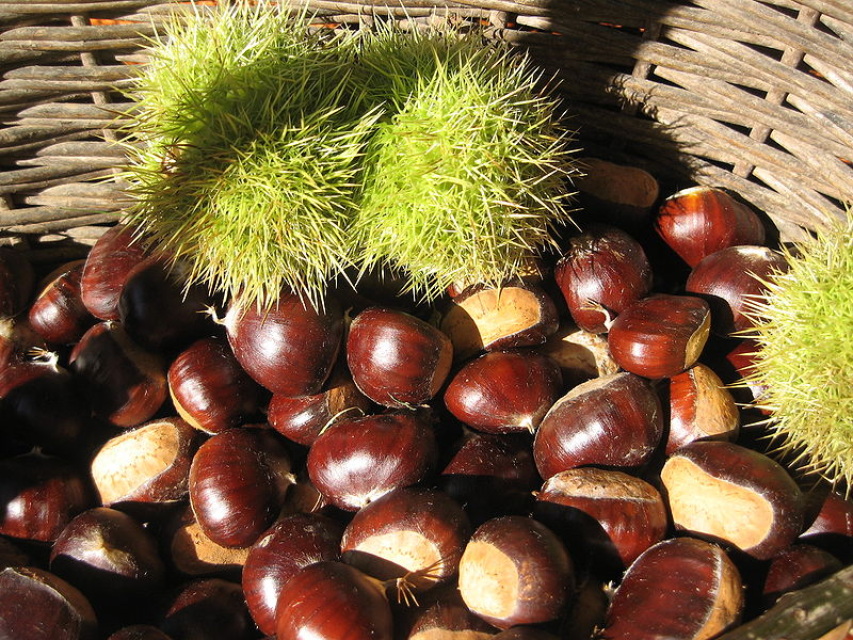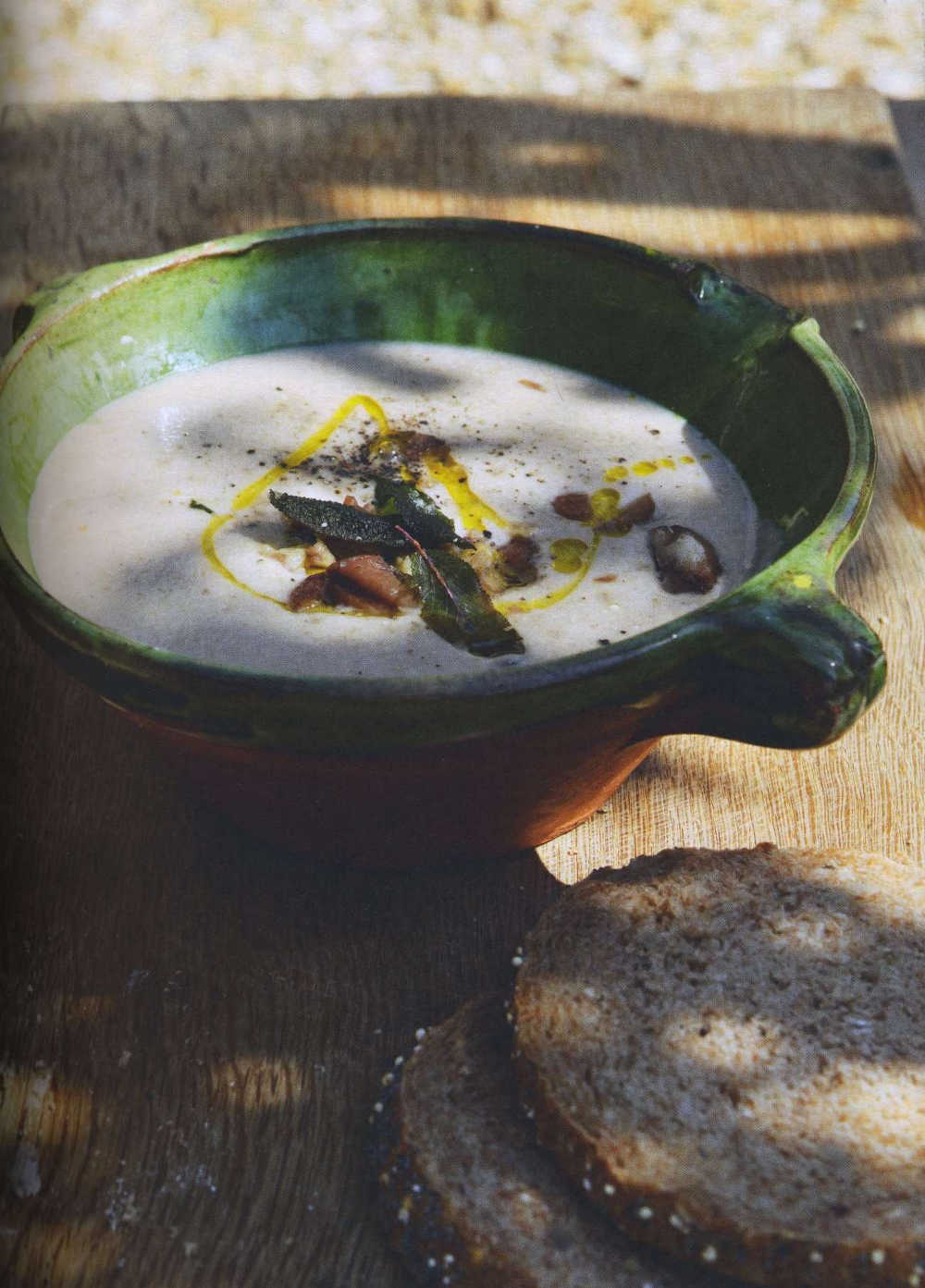Sweet Chestnut - In Season
 So much a part of our traditional Christmas, the edible chestnut, Castanea sativa, known as the Spanish or Sweet Chestnut, is a major food crop in some areas of Western Asia, North Africa and Southern Europe, especially the Mediterranean region.
So much a part of our traditional Christmas, the edible chestnut, Castanea sativa, known as the Spanish or Sweet Chestnut, is a major food crop in some areas of Western Asia, North Africa and Southern Europe, especially the Mediterranean region.
It has a commercial history dating back to Roman times and chestnut trees can be grown in some parts of Ireland - Darina Allen has a beautiful young tree in the gardens at Ballymaloe Cookery School and it has grown remarkably quickly, which may encourage more people to try. But the fresh chestnuts on sale here are most likely to come from France, Italy, Spain or Portugal, with the famous Ardèche Chestnut (AOC) being especially desirable, also the Mugello sweet chestnut (PGI) from Italy, which both peel easily and have good flavour.
Unrelated to the common horse chestnut (which is not edible), the sweet chestnut is an unusual nut in that has very little protein or fat, but its high carbohydrate content can make it useful for flour - and it is gluten free, which is a big plus, although the downside is that it doesn’t rise like most other flours.
In the past it has been associated with subsistence diets, but today it is more likely to be thought of as a treat - ‘chestnuts roasting on an open fire’ (or in the street) conjure up nostalgic memories, and who could resist a French marron glacé, the delicious candied chestnut that is traditional in France at Christmas and New Year and with variations that are associated with feast days in other European countries.
Chestnuts make a versatile ingredient in both sweet and savoury cooking and, although the season is short, they preserve well and are easily available vacuum-packed, canned or dried - also as canned chestnut purée, which makes a luxurious convenience food, handy for whipping up all kinds of quick but impressive dishes -the classic Mont Blanc, for example, where chestnut purée is topped with crème fraiche (the Italian version is Montebianco).
If used fresh, they need to be cooked (boiled or roasted) and peeled before use; prick them before cooking and peel while warm, carefully removing the inner skin as it tastes bitter and will spoil the dish.
You can make chestnut ‘flour’ in a food processor, to use in treats like gorgeous Buche de Noel, the classic chestnut and chocolate combo in a rich variation on the festive yule log, or you can use chopped chestnuts in stuffings, whole with vegetables (they’re delicious with sprouts, for example, for the Christmas table), or in more-ish soups like this one from Hugh Fearnley-Whittingstall’s ‘Veg Everyday’, published by Bloomsbury Publishing.
 RECIPE: Chestnut and sage soup
RECIPE: Chestnut and sage soup
This is a rich and elegant soup with a beguilingly velvety texture. A small portion makes a lovely starter (perfect for Christmas Day), while a larger serving, with some bread and perhaps a crisp green salad, is a satisfying lunch or supper. You can use vac-packed pre-cooked chestnuts for this, or fresh, whole chestnuts, blanched, peeled and simmered until tender.
SERVES 4-6
3 tablespoons olive oil, plus extra to trickle
15g butter
1 medium onion, chopped
6 sage leaves, roughly chopped, plus extra to finish
1 small garlic clove, finely chopped
1 litre good vegetable stock
400g cooked, peeled chestnuts
100ml creme fraiche
Sea salt and freshly ground black pepper
Heat 1 tablespoon of the olive oil and the butter in a saucepan over a medium-low heat and sweat the onion for about 10 minutes, until soft and translucent. Add the sage and garlic and sauté for a minute.
Pour in the stock and add most of the chestnuts - reserve a handful for finishing. Season with salt and pepper, increase the heat and simmer for 15 minutes, stirring from time to time.
Remove from the heat and cool slightly, then purée until very smooth in a blender or food processor, or using a stick blender. Return the soup to the pan, add the creme fraiche and adjust the seasoning if necessary. Warm through gently - do not let it boil.
Meanwhile, slice the reserved chestnuts. Heat the rest of the olive oil in a small frying pan over a medium heat and sauté the sage leaves for a few seconds until crisp, then drain on kitchen paper.
Ladle the soup into warmed bowls, scatter on the chestnuts and sage leaves and add a trickle of olive oil. Finish with a generous grinding of black pepper. Serve immediately.





There are currently no comments
Leave a comment
Not a member? Register for your free membership now!
Or leave a comment by logging in with: